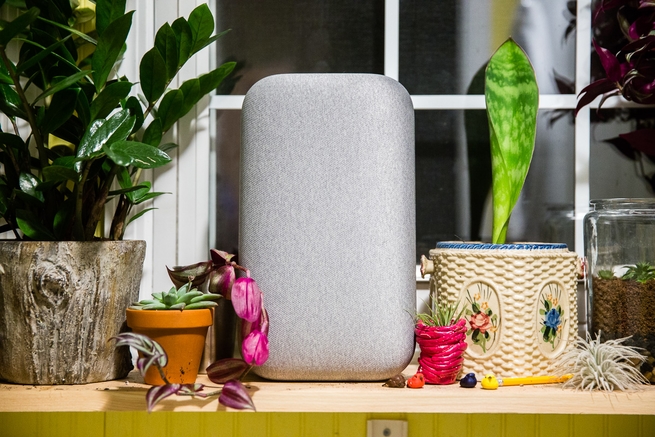Here’s what you should do before setting up that new smart speaker
Of course you bought a smart speaker—they're so cheap! Here's how to get the most out of it.

We may earn revenue from the products available on this page and participate in affiliate programs. Learn more ›

Smart speakers are cheap now. In fact, it’s not out of the ordinary to find low-end models like the Google Home Mini and the Amazon Echo Dot for as low as $25. You can barely get dinner for two at Chipotle for that price (especially if you want guac), so they seem like a no-brainer. But, getting the most out of a digital assistant takes a little setup. So, here are some steps to follow in order to get your smart speaker up and running as a music player, a smart home boss, and more.
Download the appropriate app before you get started
While the idea of a smart speaker is to yell your questions and demands instead of using your phone, setup and operation require an app to get going. Luckily, the apps typically make the setup process a lot easier.
If you’re starting up a Google Home device, for instance, the app can help you automatically detect and connect to your speaker. Some smart speakers, like Apple’s HomePod can automatically get information like the login for your wireless network directly from a mobile device, but others will require that you enter your network password, so it’s worth having handy before you get going.
Sign up for the newsletters that give you feature updates
It’s hard to know when digital assistants pick up new features—and it can even be kind of confusing. Google and Amazon both have newsletter updates you can receive via email about new features as they happen.
The app is also a good place to keep track of this. For instance, the Google Home app has a whole section dedicated to answering the question, “What can you do?”
Setup different voices if you’re using Google Home
The Google Assistant has the unique ability to tell different voices apart so multiple users can request information and get answers specific to them. So, if you and your wife both want to be able to ask about your calendars, setting up multiple voices in the device will help keep things separate.
Tie in your music services
Listening to music is by far the most common use for a smart speakers and you’ll need a streaming music service to do it. If you’re not already signed up for a service, check the compatibility of your device to pick the one that works best. If you already have a subscription, cross your fingers and hope it plays nice with your new speaker.
For instance, the HomePod only streams music from Apple Music. Echo and Google Home devices are more agnostic, but they still prefer that you use native Amazon and Google services, respectively. Spotify is one of the most flexible options and works with most of the platforms, so it’s a down-the-middle choice if you can’t decide or you’re afraid to commit.
Set up some routines
Both Alexa and Google Assistant allow you to create routines, which are multi-part actions that you can accomplish with a single command. These become a lot more important when you start adding smart home gadgets to the equation, but it’s good to explore them early so when you do add new devices, you know you have options.
Know that whatever you say to your smart speaker will be recorded and stored
Smart speakers aren’t as scary as they may seem from a security standpoint, but it’s worth knowing that everything you say to your smart speaker (or after you’ve accidentally activated it) will stay on the company’s server until you go and delete it. You can go find that data using information from this link.
Don’t put it too close to the TV
Alexa and Google Assistant should be able to tell when a commercial says their name so they don’t activate. In practice, however, that’s a lot of nonsense and I’ve unplugged smart speakers for constantly replying to the stupid TV. For now,
